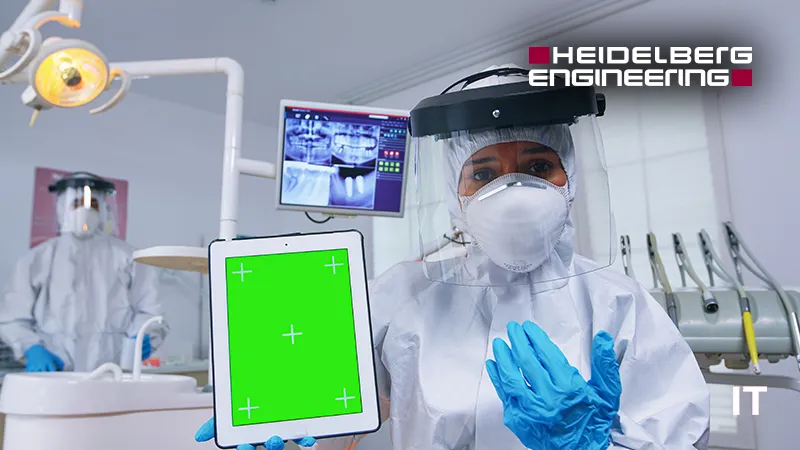Heidelberg Engineering, a global leader in ophthalmic imaging and healthcare data solutions, announces FDA clearance of the SPECTRALIS® Flex Module. This innovative, multimodal, diagnostic imaging-only platform is uniquely designed for imaging the posterior segment of pediatric and adult patients in a supine position.
The Flex Module mounts the renowned SPECTRALIS to a movable stand with an articulated adjustable arm, offering unprecedented flexibility that extends imaging capabilities to various positions and acquisition environments. This is particularly beneficial for patients who cannot be imaged with traditional tabletop OCT devices.
“Receiving FDA clearance for the SPECTRALIS Flex Module fulfills our vision of bringing Heidelberg image quality to all patients, regardless of their age or physical abilities,” says Ram Liebenthal, General Manager US at Heidelberg Engineering. “We recognized that many patients cannot use a static, table-mounted headrest. By reimagining SPECTRALIS in a more flexible configuration, we can ensure that these patients have access to best-in-class imaging, offering peace of mind to parents, guardians, and caretakers.”
Also Read: VISIE™ Inc. Launches CAAT for Robotic Knee Surgery
Similar to the traditional tabletop SPECTRALIS device, the Flex Module offers various imaging- only modalities, including high-resolution OCT, OCT Angiography (OCTA), Fluorescein Angiography (FA), Indocyanine Green Angiography (ICG), Blue Laser Autofluorescence, MultiColor, and both Widefield and Ultra-Widefield imaging. This multimodal imaging approach helps ensure convenient examinations for all patients.
Lejla Vajzovic, MD, FASRS, principal investigator of the clinical trial, remarked, “The Flex Module has been an indispensable diagnostic tool for patients who would otherwise be difficult to image. Its exceptional image quality allows me to capture the fine details essential for precise diagnosis and treatment planning. For patients in a supine position, the ability to detect macular and optic nerve pathologies ensures that these vulnerable individuals receive timely, sight-saving treatments.”
Source: Businesswire

































